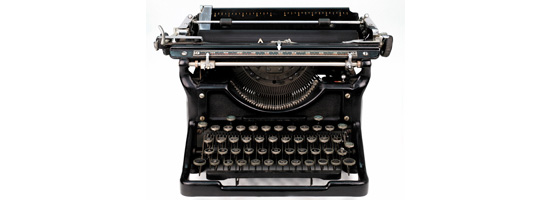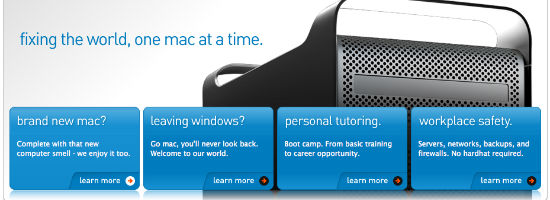
Integrating web copy and design can be a difficult feat when the designer and copywriter aren’t on the same page. Failure and disappointment often follow.
To ensure that web copy and design collectively attain optimal results, the designer and writer must have a shared understanding in at least four areas:
- Website’s purpose
- Website’s audience
- Brand’s characteristics
- Web requirements and constraints
Define the Website’s Purpose
Every website and web page should have a purpose. Amongst the most important questions a designer can ask a client is: "What is the objective of your website, and how does it support your business goals?" Surprisingly, many business owners aren’t sure.
With a bit of prodding, the designer can establish the website’s objective, which might entail, but not be limited to:
- Selling products online
- Producing leads
- Creating awareness
- Building a brand
- Attracting subscribers
- Establishing a community
- Generating feedback
What’s more, defining a website’s main objective helps shape the site’s primary call to action, which might be to get the visitor to subscribe to a newsletter, call or email, request a quote, download a demo, and so on. And when the design and copywriting are collectively geared toward getting users to take that action, the website will produce higher conversion rates and overall success.
 Energy management company Energex makes it easy for their website visitors to complete tasks, thanks to clearly defined calls to action.
Energy management company Energex makes it easy for their website visitors to complete tasks, thanks to clearly defined calls to action.
Determine the Website’s Audience
Websites should target a specific audience. Typically, there will be one primary audience, and one or two secondary audiences. Each audience has its own attitudes, concerns, biases, needs and desires. Good website design and website copy accommodates the unique characteristics of each audience.
If the designer and the copywriter are not clear who they’re targeting, chances are the website will miss the mark completely. For instance, our copywriting firm was hired to write content for a dental implant specialist, and the designer indicated we were to target the general public. By asking the client a few questions, one of our copywriters discovered they actually wanted to focus almost exclusively on referring dentists, which made a world of difference on what needed to be designed and communicated.
When a web designer and copywriter are in sync, the visual and written messages are much more likely to resonate with the intended audience. For example, per the image below, the computer repair specialists at Macinhome connect with Mac fans by featuring heavily Apple-influenced web design and copy. So when the Mac enthusiasts land on their website, they feel right at home.

Also, by clearly defining intended audiences, designers and writers avoid designing and writing for themselves or their clients, which often leads to self-aggrandizing drivel. For more on targeting the right audience, check out Web Writing: The Good, Bad and Ugly.
Understand the Brand’s Characteristics
Brands have their own personalities, and both website design and copywriting need to reflect the characteristics of the brand. Having a fun and wacky design is no good if the writing emphasizes safety and reliability. Similarly, lyrical writing isn’t effective if the brand is simple and direct.
Case in point: our copywriters assisted a pheromones manufacturer last year, whose website originally featured formal, scientific-themed visuals, along with web copy that stated, "For guys who want to get laid." Definitely a brand disconnect there.
Designers and copywriters form a personality and set a tone. Therefore, they must help the client develop a consistent identity, signifying what the company stands for and promises to deliver.
 Thrillworks offers an example of how design and web copy can harmoniously merge to convey a clear message, and create certain expectations.
Thrillworks offers an example of how design and web copy can harmoniously merge to convey a clear message, and create certain expectations.
Adhere to Web Requirements and Constraints
Internet users are constantly bombarded — and often overwhelmed — by piles of disjointed information and technologies. Through exploration and constructive discussions, designers, developers and copywriters can plan and align the right technologies, information architecture, SEO tactics, and other important website elements.
Failing to have a unified plan of attack can cause delays, grief and missed opportunities. For instance, a conventional copywriter with limited or no knowledge of online navigation, link strategies, or basic rules of SEO can hurt search engine presence, usability, conversions and a website’s overall success. In such cases, delegating certain tasks to another teammate or bringing in a specialist can save the day — and the project.
How to Achieve a Shared Understanding
While it’s easy to see that web designers and copywriters should operate from a shared understanding of purpose, audience and brand, it’s more difficult to reach this shared understanding in practice. Fortunately, there are strategies that designers and writers can employ to get on the same page.
Work from the Client’s Own Documentation
One of the easiest methods is to work from the client’s own documentation. If the client has an up-to-date, written marketing strategy and communications plan, then the website’s purpose and audience will likely be obvious. A documented brand analysis signals necessary design and copy characteristics.
Pull the Information Out of the Client
If the client doesn’t have documentation, then the writer and designer may need to pull this information out of the client. If the client has formulated plans that haven’t been documented, then the designer and writer can interview relevant managers, compile their findings, and report back to the client.
Another approach is to provide the client with a questionnaire that prompts them to note their marketing objectives and goals. By having the client respond in writing to questions surrounding purpose, audience and brand, the designer and writer can be certain that they are on the same page as the client.
Step Back From the Project
In the event the client is unable to clearly define their marketing strategy or the purpose and audience of the website, the designer and writer may need to temporarily step back from the project. Until the client can provide clear direction, the client is unlikely to be happy with the website and may make continuous requests for changes — a scenario where no one wins.
How to Deal with Crappy Copy
Designers often find themselves creating designs for old web copy. In some cases, the client may have taken copy directly from existing print material, or assigned the writing to an employee who’s an inexperienced writer. Consequently, the web copy may miss the mark for purpose, audience, brand and web requirements.
While there’s an increasing awareness surrounding web writing, many businesses continue to fail to recognize what professionally written web copy can bring to a website and the company’s bottom line. A well-versed web copywriter can help a business with everything from attaining traffic via search engines, to differentiating a business from the competition, to defining and persuasively communicating key benefits.
So, when a designer is faced with a client that insists on using weak copy, it helps to point out that professionally written web content can:
- Generate presence and attract traffic via search engines.
- Bolster their brand, to help gain trust and credibility.
- Improve conversions, which means more leads and sales.
- Provide a higher ROI on their online marketing investment.
- Eliminate stress, save time, and help avoid delays.
Summary
To attain an effective website, design and copy need to reinforce each other. The web designer and web copywriter must support the same objectives, address the same audience, and project the same brand characteristics. When in tune with each other, designers and copywriters can create more robust websites that gain credibility and trust, and achieve desired objectives, goals and conversion rates.




